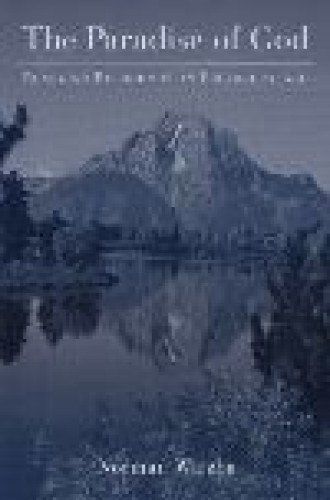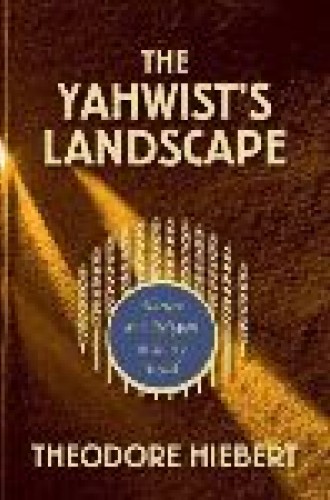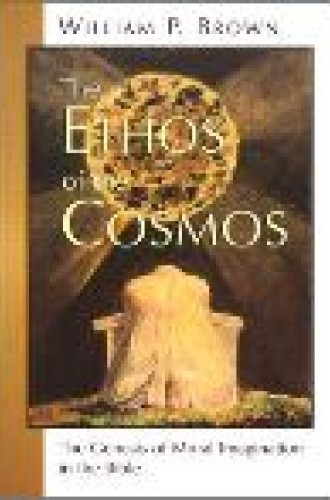Farming for God
Thirty years ago “ecological theology” was a new phenomenon. By 1995 it was a major concern for the church and for many theologians. A comprehensive annotated bibliography published in that year (Ecology, Justice, and Christian Faith: A Critical Guide to the Literature, by Peter W. Bakken) had 512 entries. However, only 23 of those entries focused on biblical interpretation. This was striking indeed, since during the preceding decades much, if not all, of ecological theology had been developed in response to the charge, most memorably launched by historian Lynn White Jr., that Christianity is ecologically bankrupt in large measure because of its dependence on the Bible.
With hindsight we can discern some of the reasons for the apparent reluctance, even principled refusal, of many biblical scholars to enter the discussion. From the middle years of the 20th century and for several decades thereafter, both Old and New Testament studies were self-consciously anthropocentric. For example, G. Ernest Wright juxtaposed the essence of Israel’s faith—a religion of history, he maintained, born in the Exodus event and honed by Israel’s desert wanderings—with the faith of the Canaanites, a religion of nature. Rudolf Bultmann set the historical faith of the early Christian community over against the “objectifying,” naturalizing faith of other religions. This kind of “history of salvation” approach dominated biblical studies for many years, both in Europe and North America, and is still presupposed by numerous scholars.
That situation has begun to change dramatically, thanks in part to Theodore Hiebert and William Brown. Hiebert shows how the Yahwist, the anonymous narrator of much of the Pentateuch, refers to the agrarian terrain of the biblical hill country. Hiebert maximizes the implications of a literal reading of “earth” in Genesis 2: Adam is made not from “the earth” (eretz), Hiebert stresses, but from the “arable soil,” which is what the word adamah means. The story of Israel is thus a story of farmers. “The claim that Israelite religion valued history while it devalued nature can no longer be derived from a formative desert experience.”
Serving and protecting the land is part of Israel’s innermost identity. This is reflected in the Yahwist’s approach to Israel’s rituals: “Made by God from arable soil and commissioned by God to farm it, the worshiper offers the soil’s produce as service to God, as an act, one might almost say, of self-definition.” Moreover, cities appear in the Yahwist’s narrative as sites where “the great harvest festivals mandated in the Yahwist’s liturgical calendar were celebrated.” Hiebert brilliantly sets the dominant hermeneutic of the 20th century on its head. Whatever else it was, the religion of Israel, at least the religion of the Yahwist, was a religion of nature.
Brown adopts and adapts many of Hiebert’s findings but broadens the scope of the inquiry. He shows how in the divine drama of the creation, redemption and consummation of the world, nature, or the earth in its fullness, was understood as a player in its own right, with its own moral claims. Brown seeks to “rejoin what has been rent asunder”: nature and history. To that end, with thoughtful precision and expository richness, he explores the various and variegated theologies of the Priestly traditions, 2 Isaiah, the wisdom theology of Proverbs, the land-theology of the Yahwist and, perhaps most strikingly, the wilderness ethos of Job. All of these, Brown demonstrates, work “to convey a thoroughly cosmic profile of God’s reign of righteousness and peace.”
Hiebert’s and Brown’s work set the stage for the arresting theological argument of Norman Wirzba. His felicitously written study is the first major theological monograph in conversation with the findings of Hiebert and Brown and with the work of other biblical scholars who have moved in similar directions. Its dialogical character makes Wirzba’s work engaging. His biblically informed theological reflection is self-consciously correlated with the kinds of questions that have long preoccupied ecologists and agrarian thinkers, especially the pioneering American ecologist Aldo Leopold. This accessible, sophisticated essay in quest of theological understanding should command widespread attention.
The Paradise of God is well titled, since the biblical theme of “the garden” shapes the entire discussion. Drawing especially on Hiebert, Wirzba shows that the theme of “the arable soil” (adamah) unifies the Yahwist’s theology in Genesis 2 and beyond, and that the teaching about the Sabbath, announced in Genesis 1 by the Priestly source, gives biblical thought about creation a profound and thoroughgoing ecological and indeed eschatological character, as well as a pronounced emphasis on justice. Wirzba explains how human culture, despite its many progressive elements, generally represents the sinful denial of God’s good creation, most dramatically in the modern era. The machinations of human aggrandizement now have eclipsed the agrarian life and produced an abstracting, godless world of dominance, exploitation and death.
In this context, Wirzba argues, the agrarian and scientific discipline of ecology, exemplified especially by the writings of Leopold, is critically important, helping us to envision an “ecological ethic” and “a garden aesthetic.” He then brings together these ecological insights with the garden theology of Genesis 2 to set forth a new vision of humans as the servants—rather than the stewards or citizens—of creation: humans are placed in the garden not to till and keep the earth (misleading translations), but to serve and care for the land. All this, in Wirzba’s view, makes possible the vision of a new kind of “culture of creation,” a world of justice for all creatures, shaped by a “Sabbath economy” joyfully celebrated in a feast of the whole creation.
Impressive as it is, the book is only a partial statement, precisely because of its consistent and often compelling agrarian focus. Though the Sabbath-theology of Genesis 1 forms Wirzba’s argument, the land-theology of Genesis 2 most fundamentally undergirds it theologically—which leaves his discussion firmly rooted in the garden. But of course there is more to biblical theology than paradise and its immediate aftermath. This is not to suggest that Wirzba is unaware of other major biblical motifs; it is more a matter of emphasis.
In claiming the agrarian theology of Genesis 2 so pervasively, Wirzba bypasses the cosmopolitan vision of Genesis 1, which presupposes the Sabbath as celebrated in the city of Jerusalem, envisioned as the center of the cosmos. In keeping with ancient Near Eastern civic motifs, Genesis 1 also presupposes a vision of the cosmos ruled by a divine monarch who creates humans in his own image and bids them to fill and rule the earth—presumably wisely and with care—and so to image forth the shepherd-like dominion of the divine king himself. Wirzba could have drawn more fully on the findings of Brown in this respect.
He also gives scant attention to countless other biblical texts that address the fateful dynamics of urban life, or that, like Psalm 29 and Job, testify to the awesome and sometimes awful workings of the Creator in the wilderness, far beyond human habitations. Again, Wirzba’s argument would be stronger had he given substantive rather than passing attention to Brown’s studies of Job. In a world where more than half the human population now lives in cities (and is often impoverished), and where the great wilderness areas of the planet are fast disappearing, a more complete exposition of the biblical witness—to the city and to the wilderness, as well as to the farm—is urgently needed. Necessary conversation partners for this kind of theological enterprise would be thinkers like Lewis Mumford and John Muir, as well as Leopold.
Its primary focus on the theology of creation, rather than on the grand sweep of the biblical narrative from Genesis to Revelation, also makes Wirzba’s work incomplete. Again, it is a matter of emphasis. Wirzba is well aware of the claims of the entire biblical narrative, especially the New Testament witness to the new creation in Christ and to the redemption of the entire creation through Christ. But such themes play minor, sometimes almost invisible, roles in this study. Is it possible to have a biblically informed theology of creation without giving a commanding position to the New Testament testimony about the cross and resurrection? Think in particular about the apostolic witness to Christ’s victory over radical evil, sin and death. Though this topic clearly matters to Wirzba, he gives it only marginal attention.
Wirzba is aware of the dangers of romanticizing the agrarian life, and he is profoundly concerned with global issues of social justice and ecological integrity. But without addressing head-on the issues of sin, violence and death in the seemingly godforsaken city and in the awesome and sometimes awful wilderness, how can an agrarian theology really command our allegiance today? Without a pronounced christological witness, can an agrarian theology convince us that the principalities and powers of death and violence have been fully overcome, allowing us to rejoice in the biblical promise of an eschatological Sabbath and eagerly work to embody that promise in our global economy?
One cannot fault Wirzba too much at this point, however, since the revolution in biblical studies signaled by the works of Hiebert and Brown has not had a pervasive resonance in New Testament studies. Not that the New Testament is not ripe for this kind of scholarly investigation. For example, Edward Adams’s tightly argued Constructing the World: A Study in Paul’s Cosmological Language convincingly refutes the anthropocentric history-versus-nature hermeneutic of Bultmann and his followers and paves the way for an interpretation of Paul’s theology as cosmic in scope and in continuity with the Old Testament trajectories traced by Hiebert and Brown. Absent works by New Testament scholars themselves, moreover, theologians like Joseph Sittler, Colin Gunton and Jürgen Moltmann have shown how the theology of the New Testament as a whole can, and perhaps should, be read in cosmic terms.
The struggle for an ecological theology that is fully conversant with the biblical witness and fully correlated with our cultural and ecological crisis must continue. Wirzba has insightfully harvested many of the fruits of Hiebert’s and Brown’s seminal studies, and we can be grateful for his own creative theological labors.







